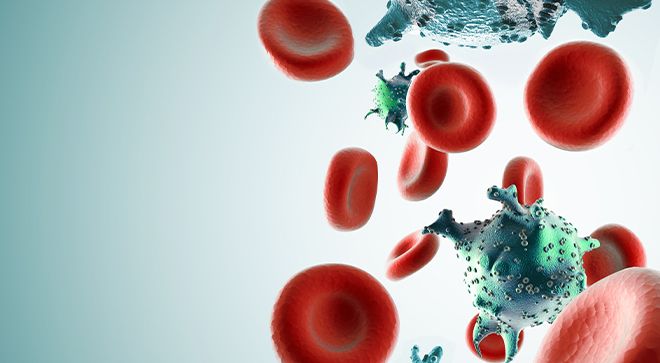Article
Combination Therapies Offer Newer Options for CLL Treatment
Author(s):
Patients with chronic lymphocytic leukemia have newer options that include targeted therapy combinations and CAR-T cell therapy.
Investigational combination treatments are bringing patients with chronic lymphocytic leukemia (CLL) one step closer to well-tolerated, time-limited therapy, according to Dr. Danielle M. Brander, a cell therapy and hematologic malignancies specialist at Duke Cancer Institute.
The targeted therapies Imbruvica (ibrutinib) and Venclexta (venetoclax) have shown that they are safe when used in combination to treat patients who are newly diagnosed with CLL or who have relapsed or stopped responding to treatment.
It is estimated by the American Cancer Society that there will be more than 20,000 new cases of CLL diagnosed this year, for which the disease risk is slightly higher in men than women.
Within the past year, two studies evaluated chemotherapy versus Imbruvica and found that Imbruvica induced prolonged progression-free survival — or the time from treatment to disease worsening – and now combinations of these therapies may prove to be beneficial to patients.
For instance, the phase 2 CLARITY trial evaluated the efficacy and safety of Imbruvica combined with Venclexta. Patients received Imbruvica for three months before being given Venclexta.
“When we talk about the safety of a combination, we don't want to see any toxicities that are greater than either drug alone,” said Brander, who is also an assistant professor of medicine. “From a safety perspective, it helps because patients have a reduction in the risk of tumor lysis and disease bulk before they start venetoclax, after which their risk of tumor lysis went down.”
Other drugs being studied in the front-line setting include Calquence (acalabrutinib) in previously untreated patients. The MURANO trial evaluated Venclexta and Rituxan (rituximab) versus the combination of Treanda (bendamustine) and Rituxan, which, Brander says, showed good progression-free survival rates.
In addition, the use of chimeric antigen receptor (CAR)-T cell therapy — removing a person’s T cells, reengineering them and then placing them back into the person to help fight the cancer cells — combined with Imbruvica is showing promise in the treatment of CLL. There are two reasons for this, explained Brander.
“Many of our high-risk patients are already on ibrutinib, so you wouldn’t be stopping a drug that's potentially still controlling some of the disease,” she said. “Preclinically, and in some of the initial trials, ibrutinib not only helps keep the disease in check, but it can also potentially help the efficacy (and safety profile of CAR-T cell therapy). For example, you might see less (side effects), such as cytokine release syndrome.”
Cytokine release syndrome is caused by a large, rapid release of cytokines into the blood from immune cells affected by the therapy and could potentially be life-threatening. Signs of this include fever, nausea, headache, rash, rapid heartbeat, low blood pressure and trouble breathing. Patients who receive CAR-T cell therapy can also experience neurological toxicities, which may include symptoms such as language impairment, confusion, delirium, involuntary muscle twitching, hallucinations or unresponsiveness.
“At the end of the day, we have these novel drugs that are very effective for patients with historically high-risk markers and older patients with comorbidities who couldn’t tolerate any therapy,” said Brander. “Now, these patients are having a good quality of life with treatment-free intervals.”
This article was adapted from an article that originally appeared on OncLive, as “Expanding the Utility of Novel Combination Regimens in CLL.”




